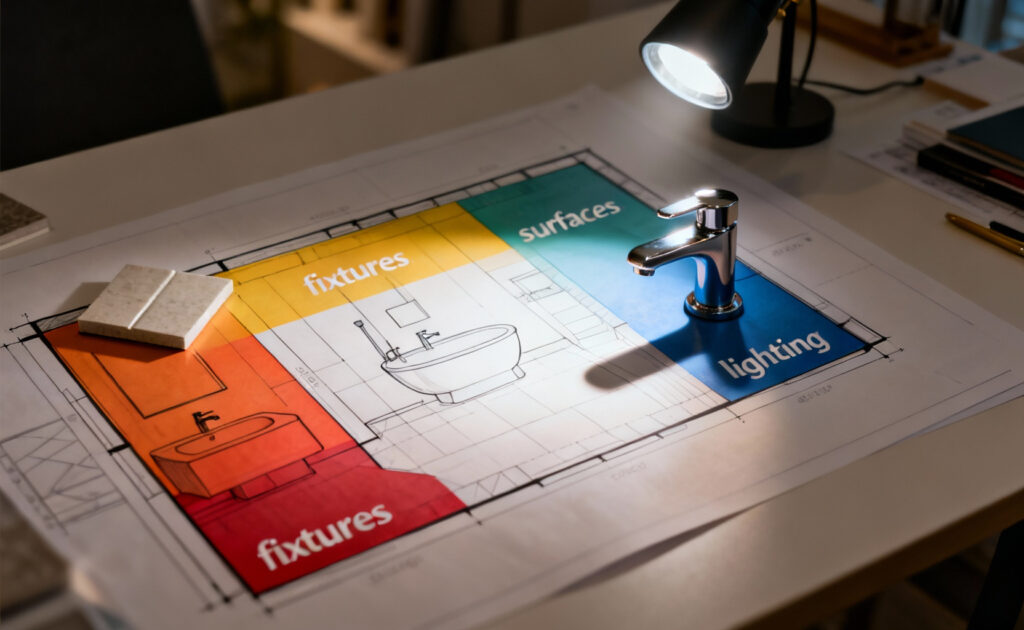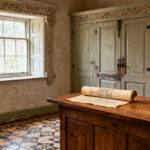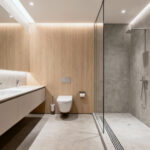Most people believe that a bathroom renovation that feels truly timeless and high-end demands a blank check. Design magazines and television shows reinforce this idea constantly. They imply that enduring quality is a luxury, making a thoughtful budget bathroom remodel seem like an exercise in compromise. This mindset is a trap; it pushes homeowners to either overspend unnecessarily or give up on their vision, settling for quick fixes that have no soul.
Here’s what they’re not telling you. In my decades of professional experience working within the bones of historic homes—from Victorian townhouses to Arts and Crafts bungalows—I’ve seen the real story unfold. Analyzing hundreds of my own projects where fiscal prudence was paramount, I can tell you unequivocally that the line between fleeting trends and timeless appeal is not drawn by budget, but by intelligent decision-making. Strategic choices, not the total amount spent, are what create enduring quality.
These 20 strategic investments, distilled from years of practical application, will show you how to move beyond basic cost-cutting. We’ll begin with Essential Fundamentals, then elevate our approach, move into Advanced Strategies, and finally, master the art of Integration for a design that lasts. This is about making every dollar count, proving that a sophisticated aesthetic isn’t just possible on a budget—it’s the result of smart design.
Essential Budget Bathroom Remodel Fundamentals (Part 1)
Before a single tile is chosen, the groundwork for a successful project must be laid. This isn’t about finding the cheapest materials; it’s about establishing a framework for intelligent investment. Here, we cover the non-negotiable fundamentals that ensure your resources are directed for maximum impact, setting the stage for a remodel defined by quality, not cost.
1. Mastering the Strategic Budget Allocation for Maximum Impact
Any successful renovation, especially in an older home, begins with a rigorously honest financial plan. Forget a simple list of costs; a truly strategic budget identifies where every dollar will deliver the greatest return. Start by securing the home’s integrity: address any underlying plumbing, electrical, or waterproofing issues first. In my historic home renovation specialist practice, I tell every client this is the one area where you never skimp. Unseen problems in old houses are not a matter of if, but when.

With that foundation secured, you can then allocate funds toward the high-impact elements you see and touch daily. A beautiful vanity countertop, solid faucet handles, or a well-chosen light fixture provides a feeling of quality that far outweighs its cost. The real art is creating a tiered budget: ‘must-haves,’ ‘nice-to-haves,’ and ‘aspirational.’ This gives you flexibility. If you save money on tile by finding a great overstock deal, you can reallocate those funds to the heirloom-quality faucet you truly want. And always—always—hold back a 15-20% contingency fund. It’s not a sign of poor planning; it’s the mark of a seasoned professional who respects the unpredictable nature of older homes.
2. Prioritizing Aesthetic Enhancements with Smart Surface Refreshing
The visual impact of a clean, renewed surface is immense, and it’s one of the most powerful tools in a savvy renovator’s kit. Before you even think about demolition, address the fundamentals. Dirty grout, crumbling caulk, and chipped paint make any space feel tired. A weekend spent deep-cleaning, re-grouting, and applying fresh, crisp caulk can utterly transform a bathroom’s perceived age and cleanliness. It’s the least glamorous work, but the results are immediate and profound.

From there, explore refinishing instead of replacing. That dated but solid porcelain-on-cast-iron tub? Reglazing it costs a fraction of a replacement and preserves a piece of your home’s original quality. Specialized epoxy kits can now give old tile or laminate countertops a remarkably convincing new life, mimicking stone or a clean solid surface. What I’ve seen play out time and again is that the longevity of these finishes is directly tied to the rigor of your prep work. Scrimping on the cleaning, sanding, and priming stages is a surefire way to get a disappointing result. Be meticulous here, and the outcome will reward your effort.
3. Unlocking Value with Targeted DIY Updates for Fixture Restoration
There is often a trove of hidden value in your bathroom’s existing fixtures, waiting to be rediscovered. A complete replacement isn’t always the smartest move. Start with the simplest fixes: a leaky faucet often just needs a new washer, a cloudy showerhead can be descaled with vinegar, and tarnished brass or chrome can be polished back to its former glory. These small victories build momentum and restore function with minimal expense.
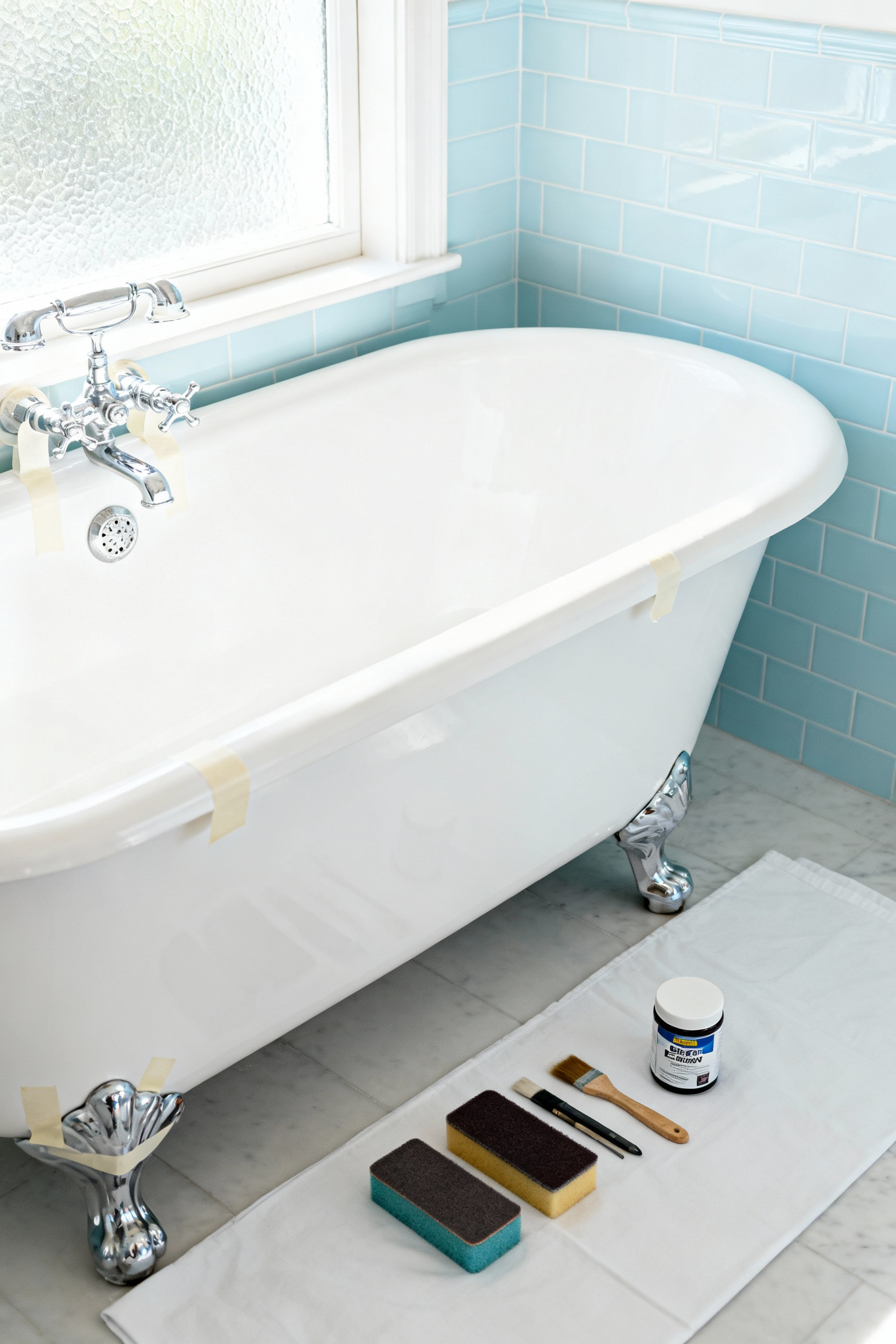
When you’re ready for a bigger impact, consider targeted restoration. Refinishing a tired vanity with a high-quality, moisture-resistant paint can be transformative, especially when paired with new hardware. Swapping out clunky 1980s pulls for elegant, period-appropriate knobs is an instant upgrade. For those with vintage fixtures, I’ve learned that the internal mechanisms of an old faucet are often far superior to modern mass-market versions. Taking the time to disassemble, clean, and replace the seals on a quality vintage piece is a strategic investment in craftsmanship that will last for decades longer than a cheap new alternative.
4. Leveraging High-Impact Paint Choices to Instantly Elevate Ambiance
Never underestimate the power of paint. It is, without question, the most cost-effective tool for reshaping a space and infusing it with character. A fresh coat is the obvious starting point, immediately erasing years of wear and creating a sense of cleanliness and order. In small or light-starved bathrooms, a soft, light-reflecting color can work wonders. But this part is important: don’t just grab any can of paint.
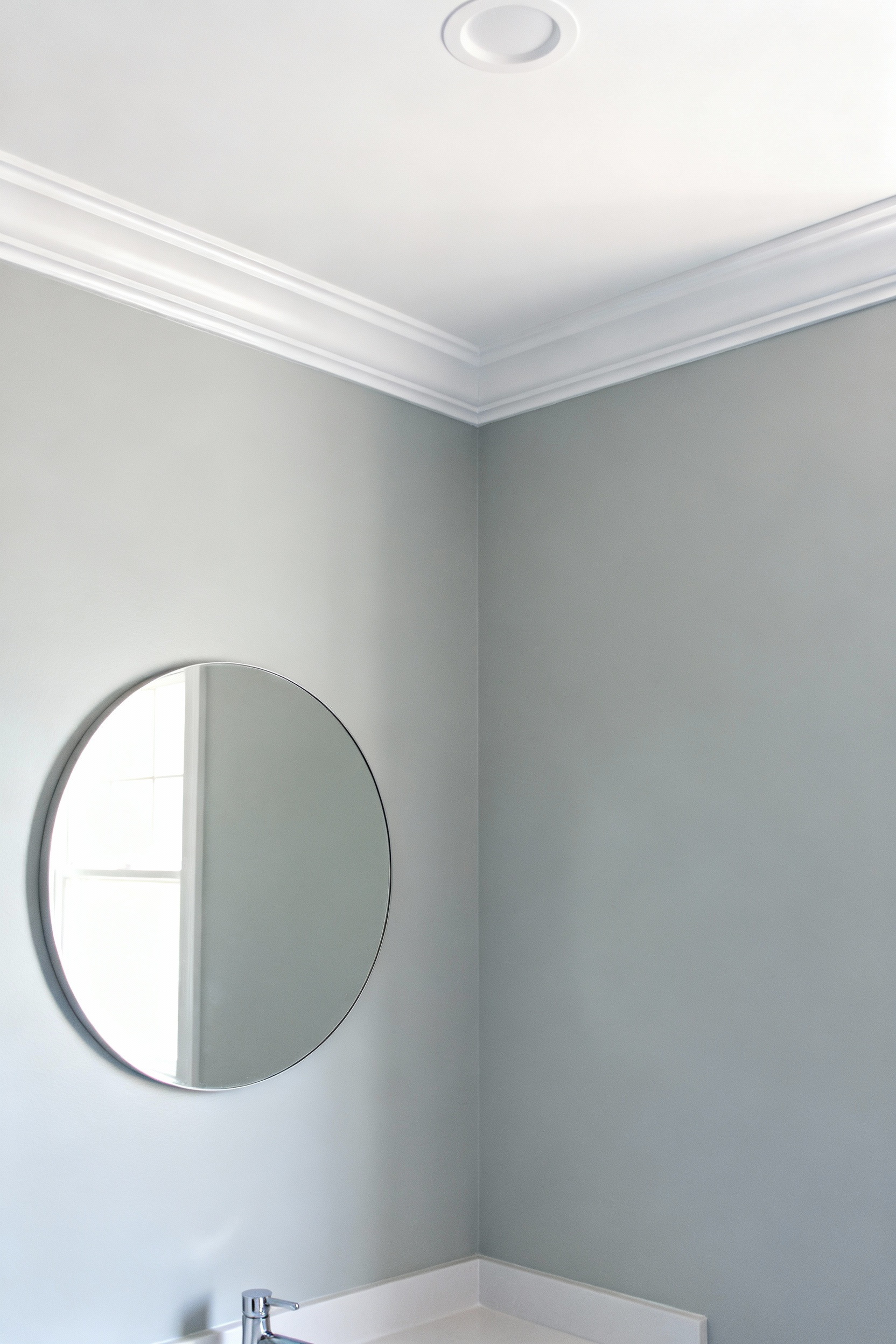
For bathrooms, the choice of finish and formulation is critical. I always specify a high-quality paint with mildew-resistant properties and a satin or semi-gloss finish. These formulations are built to withstand humidity and are far easier to clean than a matte finish. Go beyond just painting the walls. Consider painting the ceiling a shade lighter than the walls to create an illusion of height, or use a semi-gloss on the trim to subtly define the room’s architecture. I’ve seen homeowners create a stunning faux-wainscoting effect with just paint and painter’s tape, adding a layer of architectural sophistication for the cost of a single gallon. It’s a testament to how creativity, not cash, can define a space.
Essential Budget Bathroom Remodel Fundamentals (Part 2)
With the larger surfaces addressed, the soul of a room often reveals itself in the details. A truly thoughtful design is one where even the smallest functional items are chosen with intention, contributing to a cohesive whole.
5. Cultivating Visual Flow with Purposeful Accessory Integration
Accessories should never be an afterthought; they are the final layer that pulls a design together. Begin with the essentials—a soap dispenser, towel hooks, a wastebasket—but select each piece as if it were a piece of sculpture. In my professional experience, it’s far better to have one beautifully designed, high-quality towel bar than a cheap, five-piece “builder’s special” set. A single, well-chosen object signals intention and elevates everything around it.

The next step is to think about how these items relate to each other. Create a sense of visual order by grouping smaller items on a simple tray or by repeating a material or finish. If your faucet is a classic polished nickel, echo that finish in your cabinet hardware and mirror frame. This repetition creates a quiet rhythm that guides the eye and makes the space feel serene and resolved. Advanced integration involves harmonizing the bathroom with the rest of your home. If you have walnut floors in the hallway, for example, a small walnut stool or bath tray can create a subtle, elegant connection. It’s these thoughtful details that transform a utilitarian room into a personal sanctuary.
Elevating Your Budget Bathroom Remodel Approach (Part 1)
Now we move from foundational fixes to more structural design decisions. A successful remodel at this stage is about making strategic upgrades that offer outsized returns in both functionality and aesthetic sophistication, proving that a modest budget can still deliver a high-end result.
6. Optimizing Spatial Perception Through Strategic Lighting Upgrades
Lighting is the unsung hero of bathroom design. Get it right, and you can make a small space feel open and luxurious. At its core, good lighting is layered: ambient (overall light from a ceiling fixture), task (focused light at the vanity), and sometimes accent (to highlight a feature). For a budget remodel, the most critical upgrade is task lighting. A single overhead fixture casts harsh, unflattering shadows. Replacing it with two sconces mounted at eye level on either side of the mirror is a game-changer for both function and feel.
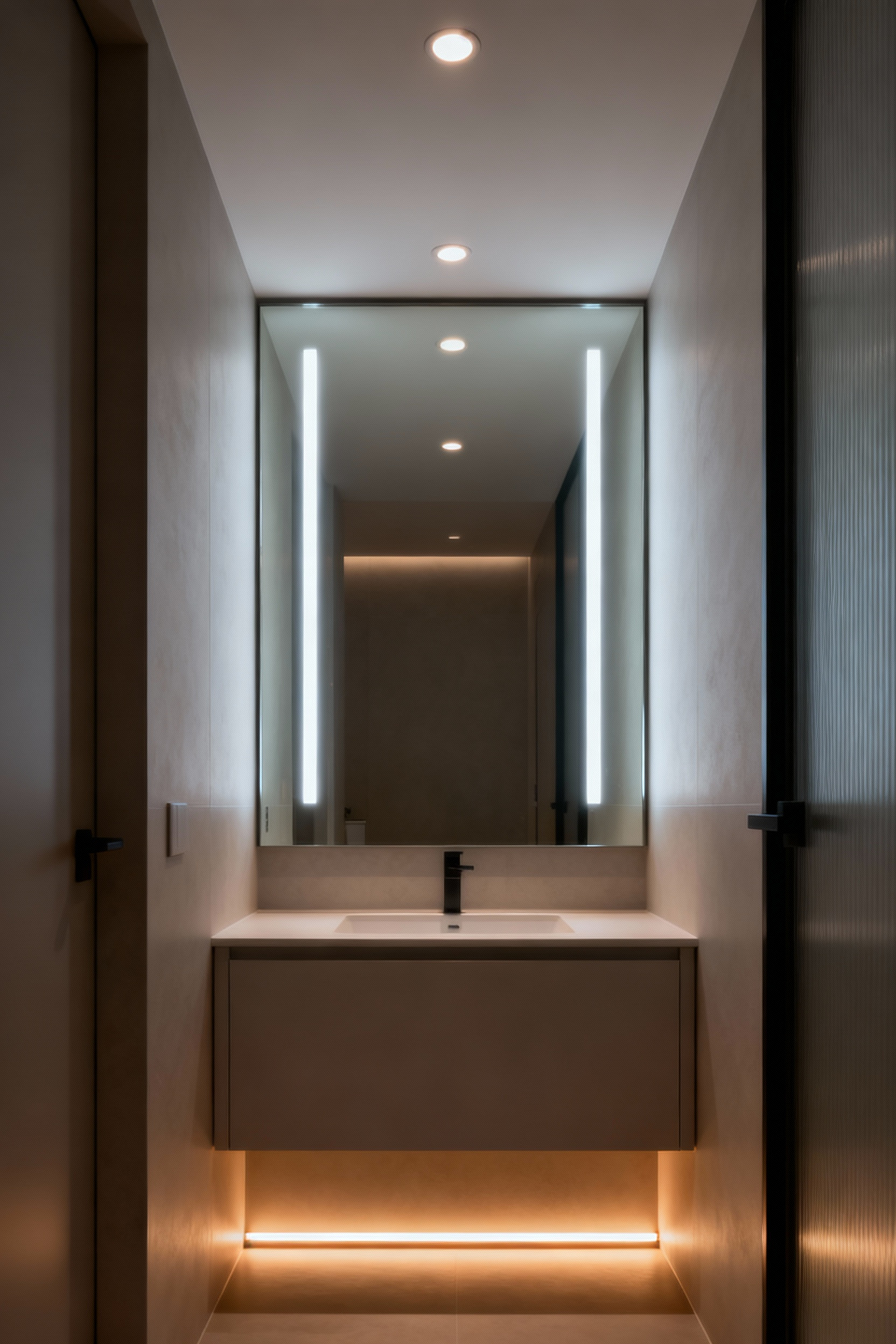
What really gets me is when people overlook the temperature of the light itself. A cool-toned LED (around 4000K) feels clean and bright for morning routines, while a warmer tone (2700K) creates a relaxing, spa-like mood. The most strategic investment of all? A dimmer switch. This one small addition allows your lighting to adapt to your needs throughout the day, providing bright, functional light when you need it and a soft, calming glow when you don’t. It’s a touch of luxury that costs very little but dramatically enhances the room’s utility.
7. Integrating Thoughtful Storage Solutions to Declutter and Enhance Utility
A serene bathroom is a clutter-free bathroom. While a basic vanity cabinet is a start, truly effective storage uses every available inch. Look up. Often, the vertical space above the toilet or in a corner is completely ignored. Tall, slender linen cabinets or simple floating shelves can add immense storage capacity without consuming valuable floor space. Years of period-appropriate renovation taught me to look for opportunities within the walls themselves.
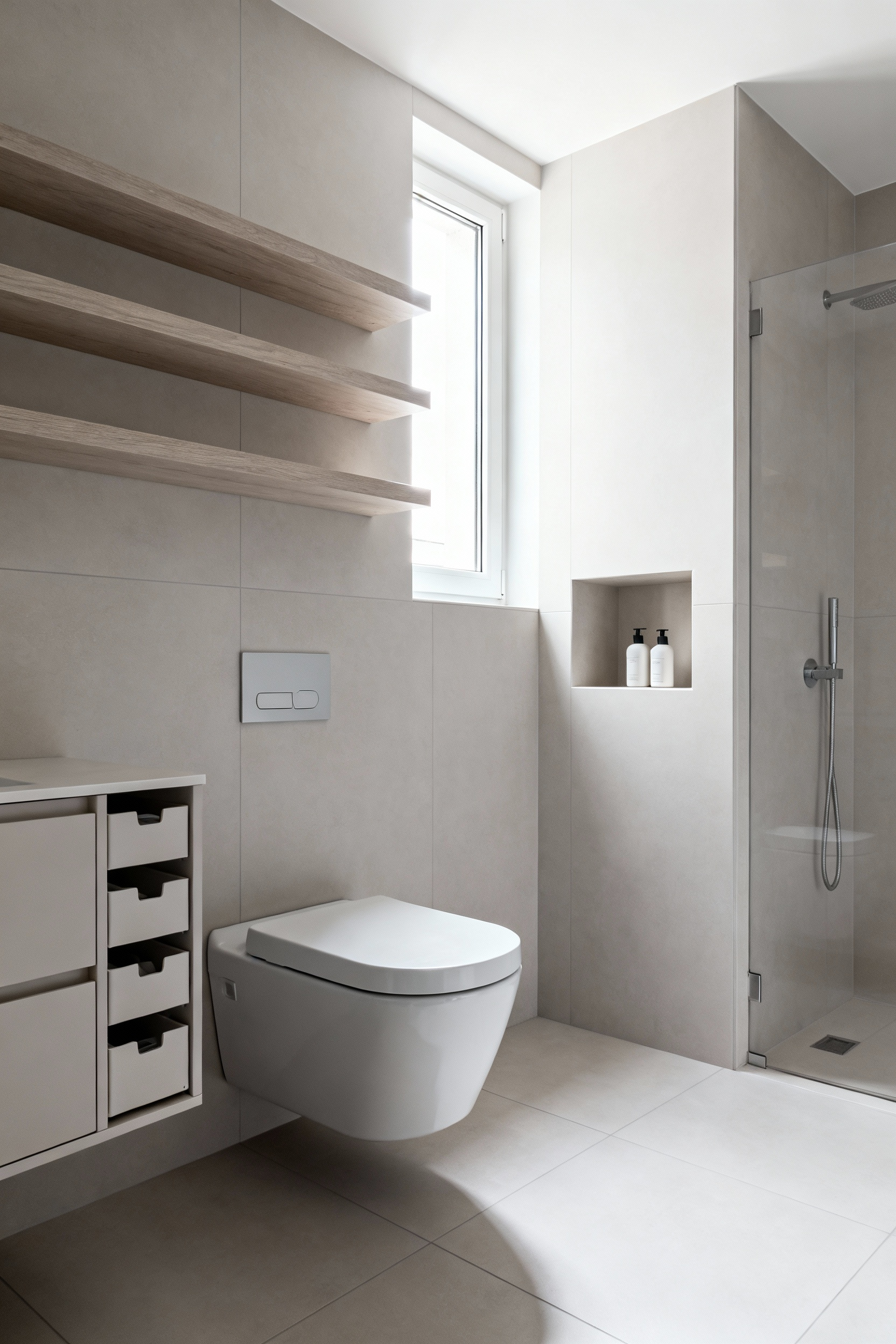
A recessed medicine cabinet, for example, offers deep storage without protruding into the room, maintaining clean visual lines. During a remodel, this is the perfect time to build a niche into the shower wall for shampoos and soap. This eliminates clutter from the tub ledge and gives the shower a custom, built-in feel. For a truly advanced touch, consider customizing the inside of your existing vanity with pull-out drawers and tiered organizers. Turning a dark, jumbled cabinet into an efficient, accessible storage zone is a clever design move that enhances daily life.
8. Selecting Durable, Economical Flooring for Lasting Practicality and Style
Bathroom flooring is a workhorse; it has to be water-resistant, durable, and safe underfoot. While classic ceramic tile is a reliable choice, modern materials have opened up fantastic possibilities for budget-conscious homeowners. Luxury Vinyl Tile (LVT) is a standout performer. It is completely waterproof, warm underfoot, and the latest designs offer astonishingly realistic mimics of natural stone or wood. For a DIYer, many LVT products are easier and faster to install than traditional tile, which saves on labor costs.

If your heart is set on tile, porcelain is a strategic investment. It’s harder and less porous than ceramic, making it incredibly durable for a high-traffic area. Here’s an insider tip: using larger format tiles (like 12×24 or 24×24 inches) means fewer grout lines. This not only makes cleaning easier but also makes a small bathroom feel more spacious and less busy. It’s a subtle but powerful design technique. In my work with historical preservation, finding a simple, classic tile pattern like a hex or basketweave can provide a timeless look that respects the home’s character while still feeling fresh.
9. Refurbishing Existing Cabinetry for a Custom, High-End Appearance
Before you price out a new vanity, take a hard look at what you already have. If the cabinet box is structurally sound, you have a prime candidate for a high-impact, low-cost transformation. A professional-grade paint job is the first step. This means meticulous prep: cleaning, sanding, and using a quality primer and a durable, moisture-resistant cabinet paint. For a flawless finish, I often recommend using a paint sprayer.
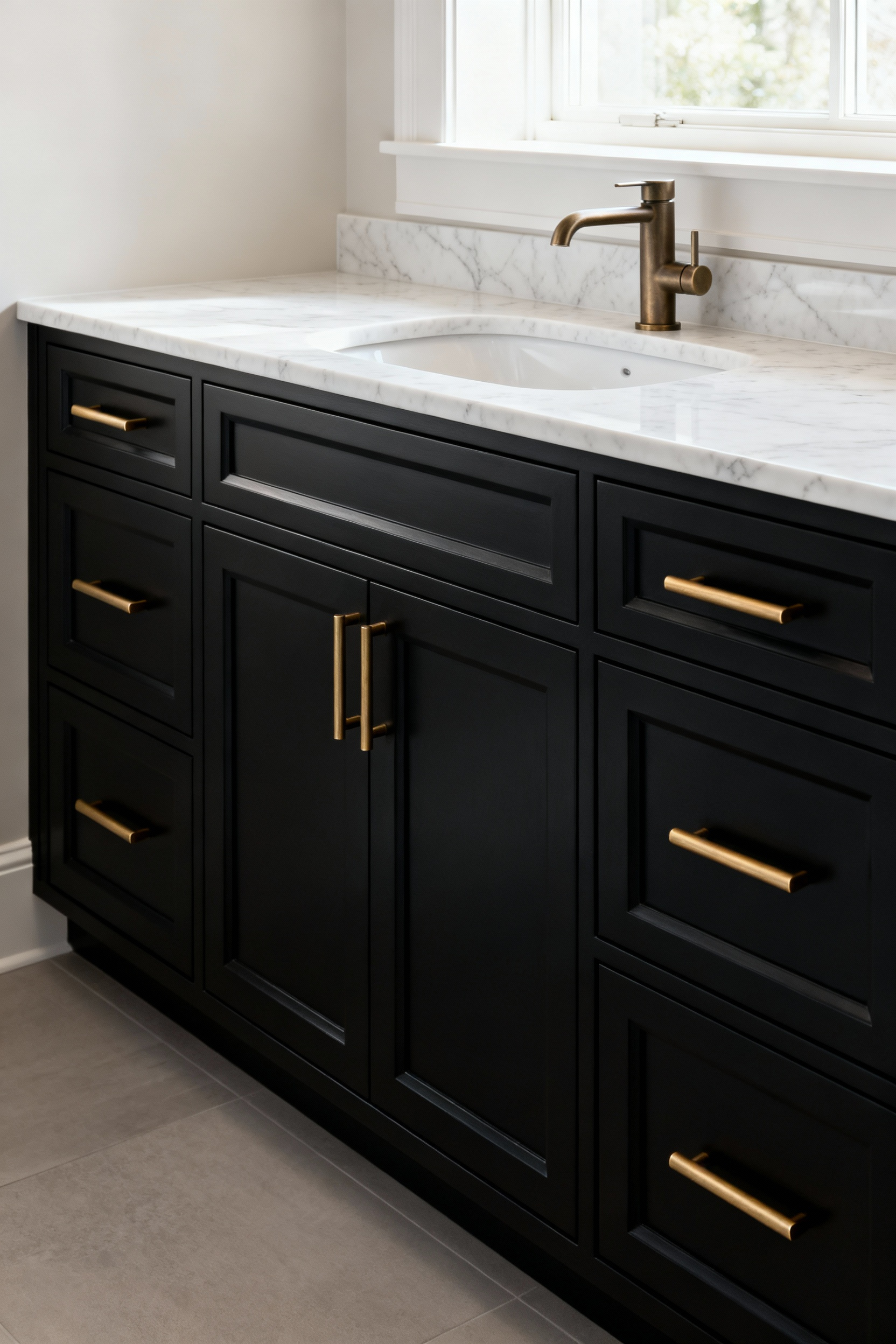
But the real magic happens in the details. Replacing dated hardware with new knobs or pulls that match your faucet finish is an immediate and dramatic upgrade. For a more custom look, you can add simple trim or molding to flat-panel cabinet doors to create a Shaker or traditional profile. I learned this when working on a project with a tight budget; we took a basic builder-grade vanity, added simple poplar molding, and painted it a deep charcoal. It ended up looking like a piece of high-end custom millwork for a tiny fraction of the cost.
Elevating Your Budget Bathroom Remodel Approach (Part 2)
Here we focus on the art of illusion—achieving the look and feel of high-end materials without the associated price tag. This requires a discerning eye and a deep understanding of modern alternatives that offer both beauty and durability.
10. Harnessing the Power of Smart Material Substitution for Cost Savings
The ability to create a luxurious aesthetic on a budget often comes down to smart substitutions. You can love the look of Calacatta marble without having to endure its cost and high-maintenance nature. Modern porcelain tiles now offer photorealistic reproductions of natural stone, complete with subtle veining and texture. They deliver 95% of the look for 20% of the price, and they are far more durable and water-resistant—a clear win for a bathroom.

This principle extends to your vanity top as well. Quartz composites or even high-end laminates can provide the look of soapstone or granite with better performance against stains and scratches. The key is to blend these smart substitutions with one or two ‘hero’ elements. I tell my clients to save on the field tile for the main floor but maybe splurge on a beautiful mosaic for the shower niche. This “jewel box” approach creates a focal point of genuine luxury that elevates the entire room, making the more economical choices around it feel intentional and smart, not cheap.
Advanced Budget Bathroom Remodel Strategies (Part 1)
Now we elevate our thinking from individual choices to holistic project management. These strategies are about orchestrating the entire process to maximize value, minimize stress, and ensure the final product is not just beautiful but also built to last.
11. Implementing a Phased Renovation Schedule for Fiscal Prudence
A full-gut renovation can be financially overwhelming. For a sophisticated budget bathroom remodel, breaking the project into logical phases can be a much smarter approach. It turns a single, intimidating expense into a series of manageable, planned investments over time. You live in the space between phases, which allows your budget—and your energy—to recover.
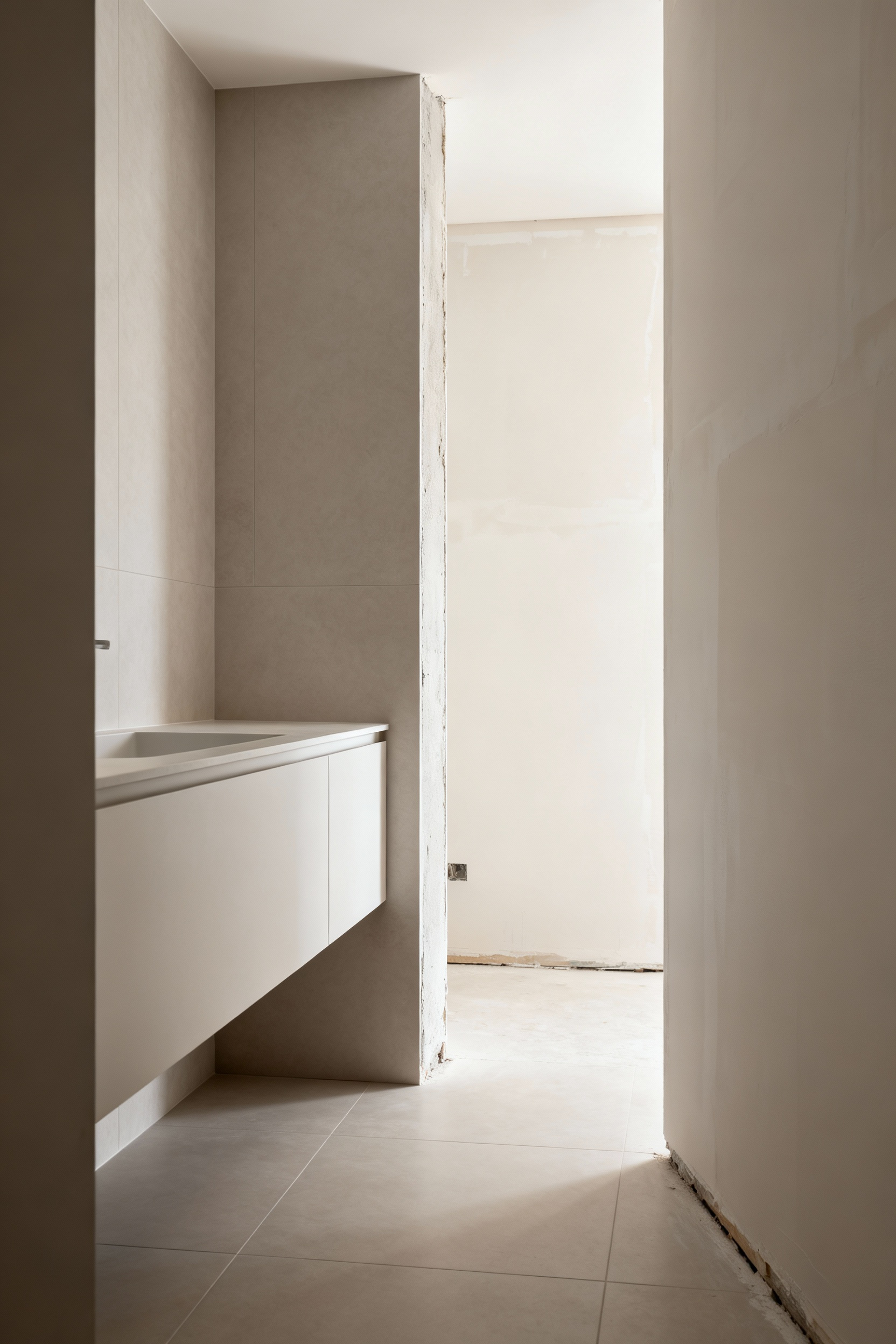
Start by identifying the natural breakpoints. Phase One might be the “wet work”: addressing plumbing, installing a new tub/shower, and waterproofing. This tackles the most disruptive and critical infrastructure. You could then live with a temporary sink and painted subfloor for a year. Phase Two could be tiling and installing the new vanity and toilet. Phase Three could be the finishing touches: lighting, mirror, paint, and trim. In my practice, I’ve noticed this approach also allows clients to save up for higher-quality materials for later phases, resulting in a better overall project than if they had tried to do everything at once with a compromised budget.
12. Adopting a ‘Preserve and Update’ Philosophy for Architectural Integrity
The most sustainable and often most beautiful renovations are those that honor the home’s original character. Before you take a sledgehammer to anything, take inventory. Does your bathroom have a classic cast-iron tub, beautiful original floor tile hidden under old linoleum, or handsome wood trim? These elements possess an inherent quality and history that can’t be bought off a shelf. Restoring them is not just a budget-friendly move; it’s an act of historical preservation.
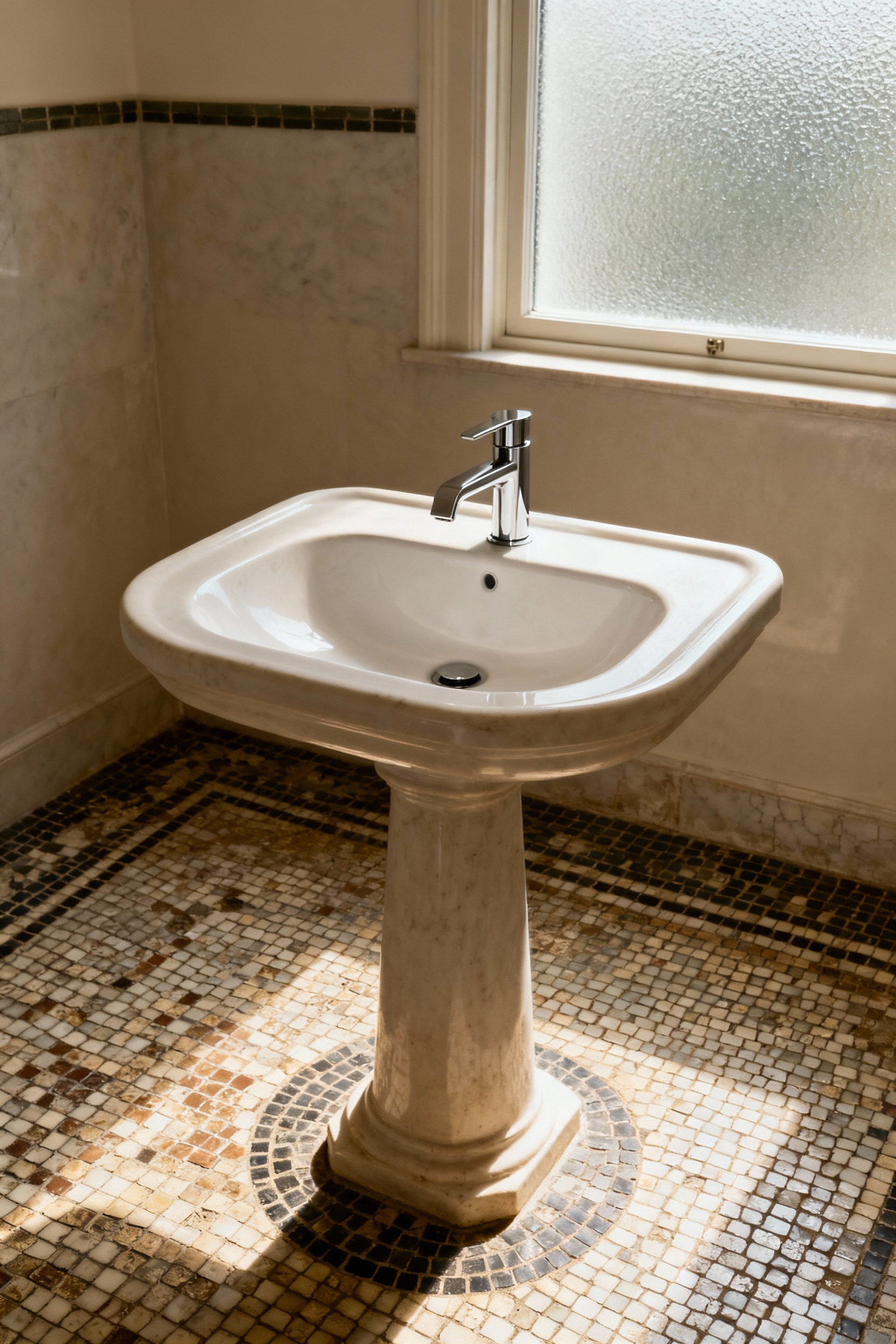
I once worked on a 1920s Tudor where the client wanted to rip out a heavily crazed pedestal sink. After some careful cleaning, we discovered it was a gorgeous original Crane with elegant lines. We had it professionally reglazed, paired it with a classic-style modern faucet, and it became the stunning centerpiece of the room. This approach requires a discerning eye to see potential through the patina of age. Blending these preserved elements with modern updates—like a sleek, frameless glass shower panel next to original wainscoting—creates a layered, authentic space that feels evolved, not manufactured.
13. Leveraging Digital Design Tools for Meticulous Pre-Visualization and Cost Control
Guesswork is the enemy of a budget. Thankfully, free and low-cost digital design tools have made it possible for anyone to meticulously plan a renovation before spending a dime. Start by using a simple online planner to create a to-scale layout of your bathroom. This will immediately reveal any clearance issues or awkward spatial relationships. You can see if that 60-inch vanity you love will actually fit once the door swings open.

Take it a step further by using tools that allow you to “try on” different finishes. Upload images of your chosen tile, vanity color, and countertop material to see how they interact in a 3D rendering. This simple step can save you from costly mistakes, like realizing two materials you loved separately actually clash horribly in person. For advanced practitioners, these tools can generate detailed material lists, helping you calculate exactly how much tile you need and minimizing waste. This level of planning turns your budget from a restriction into a precise, powerful tool for execution.
14. Strategizing Fixture Replacements for Peak Water Efficiency and Utility Savings
A fixture upgrade should do more than just improve aesthetics; it should be a strategic investment in your home’s long-term efficiency. Replacing old, water-guzzling toilets, faucets, and showerheads is a guaranteed way to lower your utility bills. It’s a renovation that literally pays you back over time. But don’t just grab any “low-flow” model.
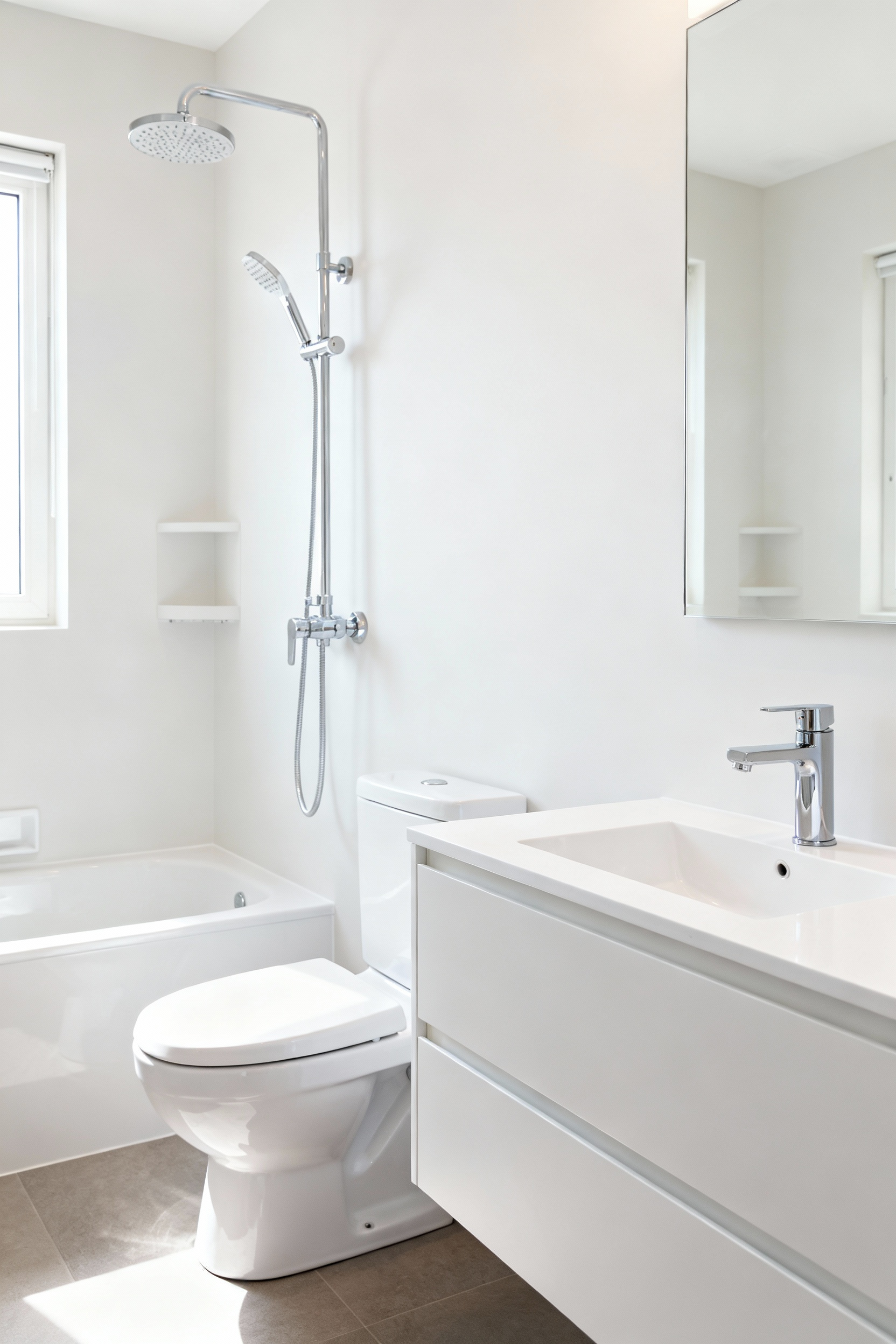
Look specifically for fixtures with the EPA’s WaterSense label. This certification guarantees that a product meets rigorous standards for both performance and efficiency, so you won’t be sacrificing a powerful shower for water savings. An ultra-efficient dual-flush toilet might cost a bit more upfront than a basic model, but its water savings can easily pay for the difference within a few years. It’s an intelligent modern integration that makes your home more sustainable and cost-effective without compromising daily comfort.
Advanced Budget Bathroom Remodel Strategies (Part 2)
Achieving a high-end look is often about procurement. Knowing where and how to source materials can unlock access to premium products at a fraction of their retail price, transforming what’s possible within your budget.
15. Navigating Vendor Relationships to Secure Premium Materials at Reduced Costs
Beyond the big-box stores lies a world of opportunity for savvy material sourcing. Don’t be afraid to engage with local, independent tile suppliers or plumbing showrooms. Start by asking if they have any overstock, end-of-batch, or “scratch and dent” items. I found the stunning marble mosaic for a client’s shower niche in a dusty corner of a warehouse; it was the leftover from a large commercial job, and we got it for 70% off.

For larger purchases, building a relationship is key. If you’re working with a contractor, ask if you can leverage their trade discount. Even without one, being organized, knowing exactly what you need, and presenting yourself as a serious customer can often open the door to negotiation. This isn’t about aggressive haggling; it’s about respectful inquiry. By moving beyond conventional retail channels and being a diligent hunter, you can acquire materials that would otherwise be far outside a modest budget.
Mastering Budget Bathroom Integration for Enduring Design (Part 1)
The final stage of mastery is about seeing the bathroom not as an isolated project, but as an integral part of your home. These strategies focus on long-term value, ensuring your renovation is cohesive, adaptable, and expertly executed.
16. Applying Universal Design Principles for Long-Term Accessibility and Value
A truly intelligent remodel looks to the future. Integrating Universal Design principles isn’t just about ADA compliance; it’s about creating a space that is comfortable, safe, and functional for everyone, at every stage of life. The most elegant and impactful Universal Design features are often invisible. A curbless shower entry, for instance, not only removes a trip hazard but also creates a clean, seamless look that makes the entire room feel larger.

What I tell my clients is to think ahead. While you’re renovating, it costs very little to add wood blocking inside the walls around the toilet and in the shower. You may not need grab bars now, but having that reinforcement in place means you can easily add them in the future without having to tear open your beautiful new tile. Choosing a lever-style faucet handle over a twist-knob or a comfort-height toilet are small choices that make a bathroom more comfortable for everyone, from a child to a grandparent. This foresight is a hallmark of enduring design.
17. Coordinating Bathroom Aesthetics with Whole-House Interior Design Philosophy
Nothing cheapens a renovation faster than a bathroom that feels completely disconnected from the rest of the house. Your goal should be cohesion, not slavish replication. Before you start your bathroom design, walk through your home and identify its core aesthetic language. Are the door hardware and light fixtures all brushed brass? Is there a consistent trim profile? Is the color palette generally warm or cool?

Let these existing elements guide your bathroom choices. In my historical preservation work, this is paramount. Echoing the home’s original wainscoting height or a specific window casing profile in the bathroom creates a sense of harmony and architectural integrity. If your home is mid-century modern, a vanity with clean lines and tapered legs will feel right. It’s about creating a subtle conversation between the rooms, which makes the entire home feel more thoughtfully designed and, ultimately, more valuable.
18. Engaging Skilled Trades for Specialized Tasks to Prevent Costly Rectifications
The most expensive mistake in a budget remodel is a cheap repair. While DIY can be empowering, you must be brutally honest about the limits of your skills. Plumbing, electrical work, and complex tiling are not places to learn on the job. A single, slow leak from a poorly soldered pipe behind a wall can cause thousands of dollars in damage, negating every penny you saved by not hiring a professional.

Think of skilled tradespeople not as an expense, but as an insurance policy on your investment. A licensed electrician ensures your wiring is safe and up to code. A talented tiler ensures your layout is perfect, your lines are straight, and your installation is waterproof. I learned this the hard way early in my career: hire the best craftspeople you can afford for the critical tasks. Their expertise is what separates an amateur-looking project from one with a professional, enduring finish.
19. Conducting Rigorous Post-Remodel Evaluations for Continual Improvement and Longevity
When the last tradesperson leaves, your job isn’t done. The first week after a remodel is a critical shakedown period. Conduct a meticulous walk-through. Test every faucet and drain, operate every light switch, and inspect every inch of grout and caulk. Check the new vanity drawers for smooth operation. Document any issues with photos and contact your contractor immediately for adjustments.
From there, shift into a mindset of proactive stewardship. This moves beyond simply fixing things when they break. Create a simple maintenance schedule. Know that grout needs to be resealed periodically. Understand what cleaners are safe for your new countertop. By actively caring for the materials and finishes, you prevent small issues from becoming large problems. This diligent oversight ensures that your smart, strategic investment retains its beauty and functionality for years to come.
Mastering Budget Bathroom Integration for Enduring Design (Part 2)
The final piece of the puzzle is a commitment to preservation. A well-designed bathroom requires a plan for its care, ensuring the integrity of your hard work and intelligent choices is maintained for the long haul.
20. Cultivating an Adaptive Maintenance Schedule to Preserve Renovation Integrity
The integrity of your remodel is preserved through consistent, thoughtful upkeep. This is more than just cleaning; it’s a proactive maintenance strategy. For instance, knowing that the beautiful chrome fixtures you chose can be damaged by abrasive cleaners informs your weekly routine. Sealing your tile grout every 12-18 months is a simple task that prevents discoloration and moisture intrusion, protecting the entire tile assembly.
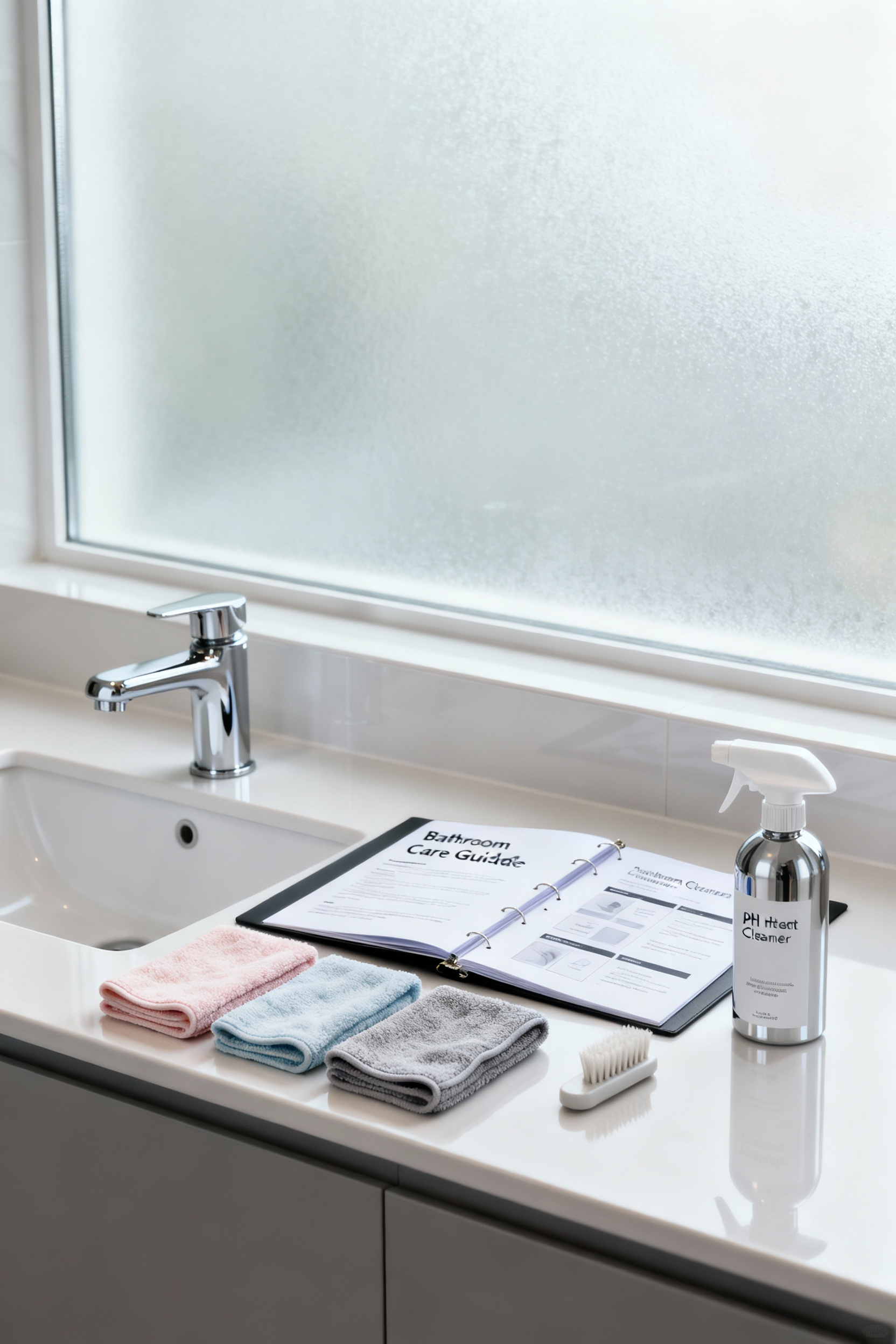
An advanced approach involves a systematic annual review. Every year, inspect all the caulking around the tub and shower and reapply it at the first sign of cracking. Test the exhaust fan to ensure it’s effectively removing moisture. Keep a small, labeled container of leftover paint for quick touch-ups on nicks and scuffs. This isn’t just about chores; it’s about a design methodology that includes long-term stewardship. In my practice, the projects that look best a decade later are always the ones that were diligently maintained. It’s the final, crucial step in ensuring your budget bathroom remodel delivers enduring value.
Conclusion
After walking through these strategies, the myth that budget and sophistication are mutually exclusive should be thoroughly dismantled. We’ve seen that a successful budget bathroom remodel is not born from limitless funds, but from focused intelligence. It is the result of seeing potential where others see problems, of preserving quality where others would demolish, and of investing strategically in the details that matter most.
The ultimate measure of your bathroom’s quality will not be how much it cost, but how well it functions, how timeless it feels, and how seamlessly it fits into the story of your home. You now have the framework. So approach your project not with the anxiety of limitation, but with the confidence of a curator. Be discerning. Be resourceful. Trust that the most elegant solutions are often the smartest, not the most expensive. The truly sophisticated space isn’t the one that shouts its price tag, but the one that whispers its intelligence.
